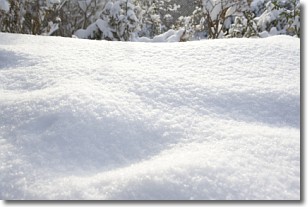Weather Alert in Idaho
Flood Advisory issued September 7 at 4:40PM MDT until September 7 at 7:30PM MDT by NWS Missoula MT
AREAS AFFECTED: Lemhi, ID
DESCRIPTION: * WHAT...Flooding caused by excessive rainfall is expected. * WHERE...A portion of east central Idaho, including the following county, Lemhi. Moose Fire Burn Scar, northwest of Salmon Idaho. * WHEN...Until 730 PM MDT. * IMPACTS...Minor flooding in low-lying and poor drainage areas, including the Moose Fire Burn Scar. * ADDITIONAL DETAILS... - At 438 PM MDT, Doppler radar indicated heavy rain due to thunderstorms. Minor flooding is ongoing or expected to begin shortly in the advisory area. Between 0.3 and 0.5 inches of rain have fallen. - Moose Fire Burn Scar, northwest of Salmon Idaho. - https://www.weather.gov/mso/hydrology
INSTRUCTION: Move away from recently burned areas. Dangerous flooding of creeks, roads and stream crossings is possible. The heavy rains could trigger rockslides, mudslides and debris flows in steep terrain from the Moose Fire Burn Scar, especially in and around these areas. Flooding is occurring or is imminent. It is important to know where you are relative to streams, rivers, or creeks which can become killers in heavy rains. Campers and hikers should avoid streams or creeks. Please report observed flooding to local emergency services or law enforcement and request they pass this information to the National Weather Service when you can do so safely.
Want more detail? Get the Complete 7 Day and Night Detailed Forecast!
Current U.S. National Radar--Current
The Current National Weather Radar is shown below with a UTC Time (subtract 5 hours from UTC to get Eastern Time).

National Weather Forecast--Current
The Current National Weather Forecast and National Weather Map are shown below.

National Weather Forecast for Tomorrow
Tomorrow National Weather Forecast and Tomorrow National Weather Map are show below.

North America Water Vapor (Moisture)
This map shows recent moisture content over North America. Bright and colored areas show high moisture (ie, clouds); brown indicates very little moisture present; black indicates no moisture.

Weather Topic: What are Shelf Clouds?
Home - Education - Cloud Types - Shelf Clouds
 Next Topic: Sleet
Next Topic: Sleet
A shelf cloud is similar to a wall cloud, but forms at the front
of a storm cloud, instead of at the rear, where wall clouds form.
A shelf cloud is caused by a series of events set into motion by the advancing
storm; first, cool air settles along the ground where precipitation has just fallen.
As the cool air is brought in, the warmer air is displaced, and rises above it,
because it is less dense. When the warmer air reaches the bottom of the storm cloud,
it begins to cool again, and the resulting condensation is a visible shelf cloud.
Next Topic: Sleet
Weather Topic: What is Snow?
Home - Education - Precipitation - Snow
 Next Topic: Stratocumulus Clouds
Next Topic: Stratocumulus Clouds
Snow is precipitation taking the form of ice crystals. Each ice crystal, or snowflake,
has unique characteristics, but all of them grow in a hexagonal structure.
Snowfall can last for sustained periods of time and result in significant buildup
of snow on the ground.
On the earth's surface, snow starts out light and powdery, but as it begins to melt
it tends to become more granular, producing small bits of ice which have the consistency of
sand. After several cycles of melting and freezing, snow can become very dense
and ice-like, commonly known as snow pack.
Next Topic: Stratocumulus Clouds
Current conditions powered by WeatherAPI.com




